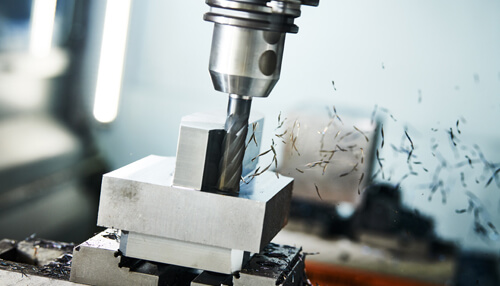Computer numerical control milling, also known as CNC milling, is a process that can be used to craft custom-made parts. This is done through rotating multipoint cutting tools and computer-operated controls that take material from a workpiece. Notably, CNC milling is a mechanical process that involves turning, drilling, and other machining processes like removing specific material from the workpiece using a cabinet CNC machine. This machining process is suitable for machining a broad range of materials, like plastic and metal, and producing several customized products and components.
Generally, the CNC machining process provides several financial and production benefits over the traditional machining process no matter if you have a Desktop CNC Mill. For instance, instead of having a skilled technician handling every machine, many industries utilize CNC machining to operate several machines with only a single skilled professional. For that reason, many industry leaders work with CNC machining services to get instant quotes for CNC machining and create the necessary parts they need within their industry.
To enlighten yourself about the benefits of CNC machining and save a significant amount of costs on your next CNC milling project, you may consider reading the critical points below.
Benefits Of CNC Machining
If you’re responsible for manufacturing metal parts and components, you’re probably considering the benefits you can get using CNC machining. Regardless of the type of business you have, the advantages of CNC machining remain the same. Notably, the autonomous machining and digital template of CNC machining enhance accuracy and eliminate human error. Moreover, another benefit of CNC machining is that it only requires a few staff to carry out the production tasks. A single skilled operator can handle several autonomous CNC machines, and a single computer programmer can get them packed with the necessary designs.
Regarding the designs loaded into the CNC software, the program can retrieve the design effortlessly to manage it and produce the object again. Regardless of external factors like changes in the machine operator, the CNC machining process remains to create an accurate match. Consequently, keeping up-to-date with versions of the design is no longer necessary as they may exist on a flash drive, disk, or computer capable of storing critical files.
Cost-Saving Tips On Your Next CNC Milling Project
Avoid Extremely Thin Walls
Thin walls require more time to produce because they’re fragile or breakable. They need numerous passes with low cutting depths to prevent errors. Machining them to specific tolerance can also be time-consuming and challenging as they’re likely to vibrate. As a result, it increases machining time and your machining cost. For that reason, to avoid this kind of additional cost, it’s essential to prevent fragile walls and only design thicker ones as they’re more durable and cost less to the machine. Ideally, a standard minimum metal thickness for CNC machined plastics is 1.5 mm and 0.8 mm for metals.
Consider The Radius For Inside Corners
In a CNC milling project, it’s critical to note that all interior walls or vertical edges will have a radius instead of a right angle. It’s because the CNC milling cutting tools are cylindrical, so machining a perfect inside corner is nearly impossible. The only way to accomplish this is through electrical discharge machining. However, this manufacturing process is costly compared to CNC machining. For that reason, to save on your CNC milling project, it’s essential to round all interior vertical edges in your design as it’ll save the time it takes the cutting room to produce sharp edges.
Furthermore, considering the inside corner fillets when deciding on parts can result in a more efficient production process and help you save on your next CNC milling project. Note that a larger corner radius is quicker and cheaper to mill than a smaller corner radius. Thus, it’s advisable to select a sufficiently sized radius to enable the CNC milling cutting tools to cut and bend the corner without the need to reposition and stop.
Limit Tight Tolerances
Although a CNC machine can achieve tight tolerances, it remains a challenging task to accomplish because machining holes can create burrs on the edges. Also, when your component design contains a tight tolerance, it increases the cost due to the increased machining time and additional manual inspection. For that reason, to fulfill the needed functionality of a given component and help you save on your next CNC milling project, it’s helpful to limit tolerances or simply include the appropriate range for a component’s dimensions.
Furthermore, if there are no specified tolerances indicated on the part’s design, it’s recommended to maintain a standard tolerance of 0.5 millimeters for metal parts and 10 millimeters for plastic parts.
Conclusion
Overall, although CNC machining offers many benefits, it’s an expensive machining process since accomplishing and redoing any operation can disrupt your budget. That’s why careful planning is crucial when handling any CNC milling project. With the proper cost-saving methods like the points given above, you can minimize machining time, improve CNC machining efficiency, and therefore, reduce costs on your next CNC milling project.




